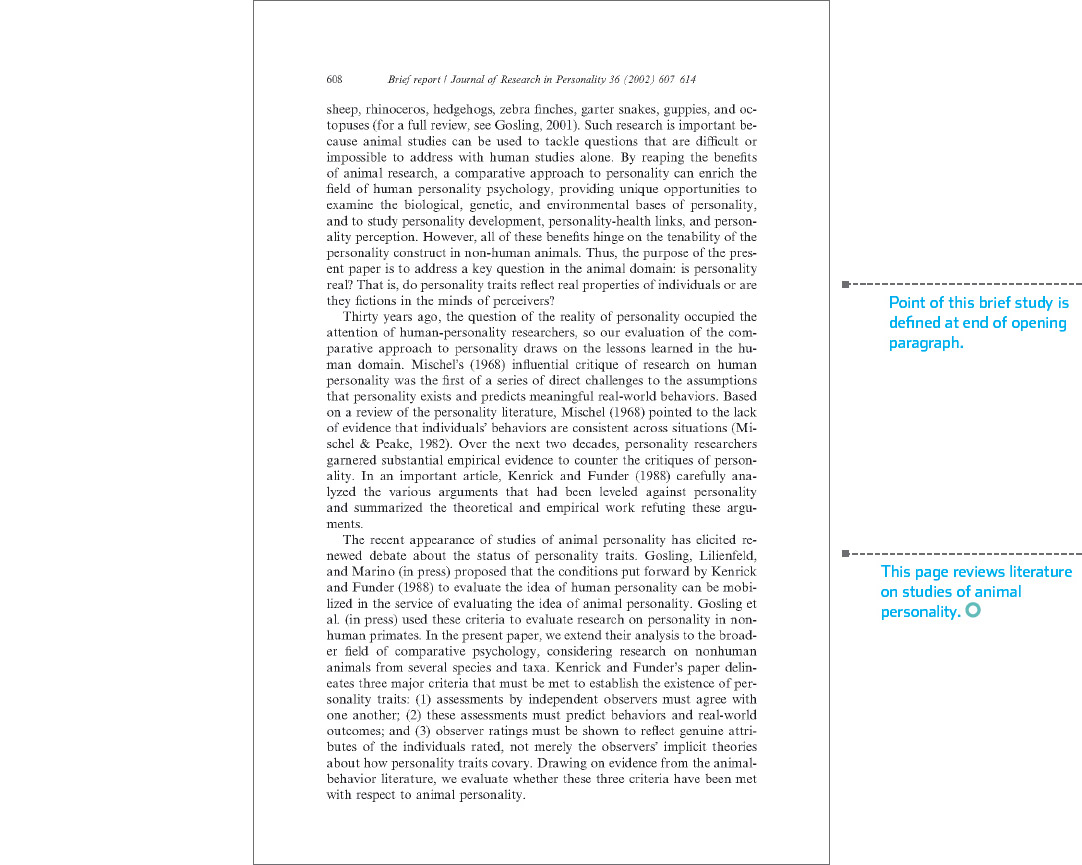Evaluating Sources
Chapter Opener
40
find reliable sources
Evaluating Sources
In Chapter 38, you were directed to the best possible print and online sources for your research. But the fact is, all sources, no matter how prestigious, have strengths and weaknesses, biases and limitations. Even the most well-
Preview source materials for their key features and strategies. Give any source a quick once-
Then scan the introduction (in a book) or abstract (in an article). From these items, you should be able to quickly grasp what the source covers, what its methods are, and what the author hopes to prove or accomplish.
Inspect the table of contents in a book or the headings in an article methodically, using them to figure out the overall structure of the work or to find specific information. Briefly review charts, tables, and illustrations, too, to discover what they offer. If a book has an index — and a serious book should — look for the key terms or subjects you are researching to see how well they are covered.
If the work appears promising, read its final section or chapter. Knowing how the material concludes gives insight into its value for your research. Finally, look over the bibliography. The list of sources indicates how thorough the author has been and, not incidentally, points you to other materials you might want to examine.
Check who published or produced the source. In general, books published by presses associated with colleges and universities (Harvard, Oxford, Stanford, etc.) are reputable sources for college papers. So are articles from professional journals described as refereed or peer-
You can also usually rely on material from reputable commercial publishers and from established institutions and agencies. The New York Times; the Wall Street Journal; Random House; Farrar, Straus & Giroux; Simon & Schuster; and the U.S. Government Printing Office make their ample share of mistakes, of course, but are generally considered to be far more reliable than most blogs or personal Web sites. But you always need to be cautious.
Check who wrote a work. Ordinarily, you should cite recognized authorities on your topic. Look for authors who are mentioned frequently and favorably within a field or whose works appear regularly in notes or bibliographies. Get familiar with them.
The Web makes it possible to examine the careers of other authors whom you might not recognize. Search for their names online to confirm that they are reputable journalists or recognized experts in their field. Avoid citing authors working too far beyond their areas of professional expertise. Celebrities especially like to cross boundaries, sometimes mistaking their passion for an issue (environmentalism, diet, public health) for genuine mastery of a subject.

Entertainer Jenny McCarthy has disturbed many public health officials by her claims of a connection between childhood vaccination and autism. She has a personal connection to the issue but no medical or scientific credentials.
Dennis Van Tine/Newscom.
You can learn a lot about a source by previewing a few basic elements.
Consider the audience for a source. What passes for adequate information in the general marketplace of ideas may not cut it when you’re doing academic research. Many widely read books and articles that popularize a subject — such as climate change or problems with education — may, in fact, be based on more technical scholarly books and articles. For academic projects, rely primarily on those scholarly works themselves, even if you were inspired to choose a subject by reading respectable nonfiction. Glossy magazines shouldn’t play a role in your research either, though the lines can get blurry. People, O, Rolling Stone, or Spin might be important if you are writing about popular culture or music. Similarly, Wikipedia is invaluable for a quick introduction to a subject, but don’t cite it as an authority in an academic paper.
Establish how current a source is. Scholarly work doesn’t come with an expiration date, but you should base your research on the latest information. For fields in which research builds on previous work, the date of publication may even be highlighted within its system of documentation. For books, you’ll find the date of publication on the copyright page, which is the reverse side of the title page.
Check the source’s documentation. All serious scholarly and scientific research is documented. Claims are based on solid evidence backed up by formal notes, data are packed into charts and tables, and there is a bibliography at the end. All of this is done so that readers can verify the claims an author makes.
In a news story, journalists may establish the credibility of their information by simply naming their sources or, at a minimum, attributing their findings to reliable unnamed sources — and usually more than one. The authors of serious magazine pieces don’t use footnotes and bibliographies either, but they, too, credit their major sources somewhere in the work. No serious claim should be left hanging.(think critically)
For your own academic projects, avoid authors and sources with undocumented assertions. Sometimes you have to trust authors when they are writing about personal experiences or working as field reporters, but let readers know when your claims are based on uncorroborated personal accounts.
You can learn a lot about a source by previewing a few basic elements.

Pages 454–

(understand synthesis papers)